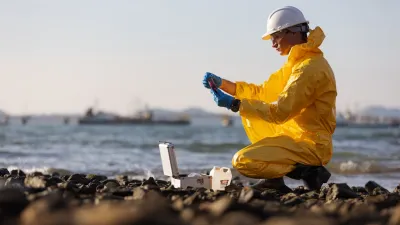Nobel laureate and new Energy Secretary Dr. Steven Chu is interviewed on what it will take to solve the climate change crisis - three major technological improvements plus carbon pricing. While no fan of coal, he acknowledges improvements are needed.
"Steven Chu, the new secretary of energy, said Wednesday that solving the world's energy and environment problems would require Nobel-level breakthroughs in three areas: electric batteries, solar power and the development of new crops that can be turned into fuel.
Dr. Chu said a "revolution" in science and technology would be required if the world is to reduce its dependence on fossil fuels and curb the emissions of carbon dioxide and other heat-trapping gases linked to global warming.
Solar technology, he said, will have to get five times better than it is today, and scientists will need to find new types of plants that require little energy to grow and that can be converted to clean and cheap alternatives to fossil fuels.
He said that while President Obama and Congressional Democratic leaders had endorsed a so-called cap-and-trade system to control global warming pollutants, there were alternatives that could emerge, including a tax on carbon emissions.
In any case, he supports putting a price on carbon emissions to begin to address climate change."
Thanks to Bob Maginnis
FULL STORY: Big Science Role Is Seen in Global Warming Cure

Maui's Vacation Rental Debate Turns Ugly
Verbal attacks, misinformation campaigns and fistfights plague a high-stakes debate to convert thousands of vacation rentals into long-term housing.

Planetizen Federal Action Tracker
A weekly monitor of how Trump’s orders and actions are impacting planners and planning in America.

In Urban Planning, AI Prompting Could be the New Design Thinking
Creativity has long been key to great urban design. What if we see AI as our new creative partner?

King County Supportive Housing Program Offers Hope for Unhoused Residents
The county is taking a ‘Housing First’ approach that prioritizes getting people into housing, then offering wraparound supportive services.

Researchers Use AI to Get Clearer Picture of US Housing
Analysts are using artificial intelligence to supercharge their research by allowing them to comb through data faster. Though these AI tools can be error prone, they save time and housing researchers are optimistic about the future.

Making Shared Micromobility More Inclusive
Cities and shared mobility system operators can do more to include people with disabilities in planning and operations, per a new report.
Urban Design for Planners 1: Software Tools
This six-course series explores essential urban design concepts using open source software and equips planners with the tools they need to participate fully in the urban design process.
Planning for Universal Design
Learn the tools for implementing Universal Design in planning regulations.
planning NEXT
Appalachian Highlands Housing Partners
Mpact (founded as Rail~Volution)
City of Camden Redevelopment Agency
City of Astoria
City of Portland
City of Laramie





























